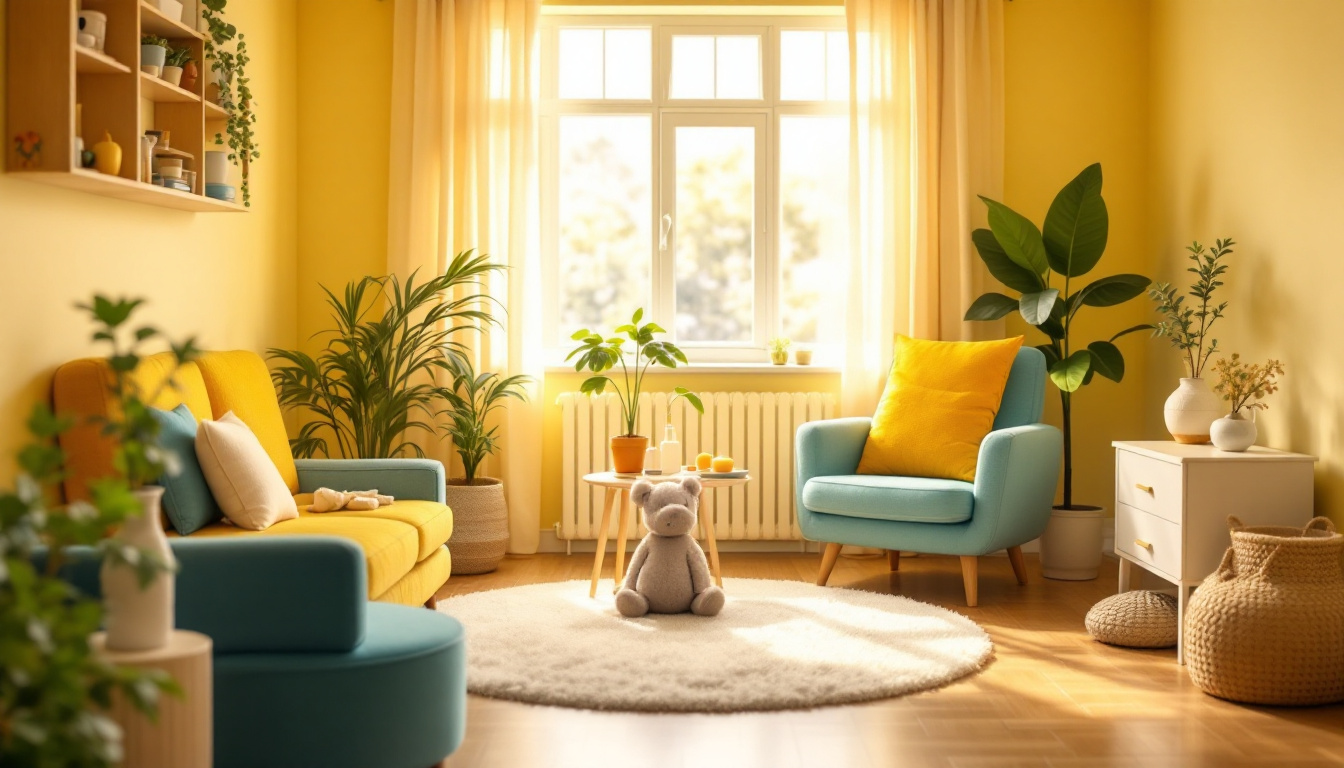The Calm-Down Corner For Kids With Autism
Discover tips for creating a calm-down corner for children with autism to promote emotional regulation and serenity.
Designing a Calm Down Corner
Creating a calm-down corner for children with autism is an essential aspect of fostering emotional regulation and providing a safe space for self-soothing. This section will explore the importance of having a calm space and the sensory considerations necessary for designing an effective calming environment.
Importance of a Calm Space
Establishing a calm space, often referred to as a "calming corner," is vital for individuals with autism. This designated area allows children to find solace and regulate their emotions effectively. A calm-down corner serves as a supportive environment where children can decompress and manage their feelings without external distractions. According to Ambitions ABA, creating such a space can significantly impact the well-being and emotional regulation of children on the autism spectrum.
Benefits of a Calm Space & Impact:
- Provides a safe haven: Reduces anxiety and stress.
- Encourages self-regulation: Promotes emotional control.
- Offers a space for decompression: Aids in processing sensory overload.
Sensory Considerations
When designing a calm-down corner, sensory considerations are crucial. Children with autism often experience hypersensitivity to their surroundings. Therefore, it is essential to create a calm, clean, non-toxic, and soothing environment tailored to their preferences. Key sensory elements to incorporate include:
- Cozy Items: Blankets, pillows, and stuffed animals provide comfort and tactile input, which can be calming for children, especially those with sensory difficulties.
- Weighted Items: Weighted blankets or pillows offer deep pressure, promoting relaxation and a sense of security.
By focusing on these sensory aspects, caregivers can create a calming corner that minimizes overstimulation and helps children manage sensory overload. For more tips on managing sensory challenges, explore our article on how to manage sensory overload in autism?. Additionally, consider integrating calming activities and tools that cater to the individual needs of the child, enhancing the effectiveness of the calm-down corner in supporting emotional well-being.
Calm Down Corner Essentials
Creating an effective calm-down corner for children with autism involves incorporating techniques that promote relaxation and self-regulation. Two essential components are deep breathing techniques and sensory activities.
Deep Breathing Techniques
Deep breathing exercises serve as a valuable tool for children with autism to manage emotions and find tranquility in overwhelming situations. These techniques can aid in developing self-regulation skills and reducing stress levels. Here are a few simple deep breathing exercises that can be incorporated into a calm-down corner:
- Balloon Breathing: Inhale deeply as if inflating a balloon, then exhale slowly as if letting the air out.
- 5-4-3-2-1 Breathing: Count down while inhaling deeply. Inhale for 5 seconds, hold for 4, exhale for 3, hold for 2, and exhale for 1.
- Bubble Breathing: Pretend to blow bubbles. Inhale deeply and exhale slowly as if blowing bubbles through a wand.
These exercises can help promote relaxation and alleviate anxiety, making them ideal for a calm-down corner.
Sensory Activities
Sensory activities are equally important in creating a calming environment. These activities engage the senses, redirect attention, and promote relaxation among children with autism. Here are some sensory activities that can be included in a calm-down corner::
- Weighted Blankets: Provide comfort and a sense of security, helping to reduce anxiety.
- Noise-Canceling Headphones: Block out overwhelming sounds, allowing for a quieter space.
- Tactile Input: Include various textures such as soft fabrics, stress balls, or sensory bins filled with different materials to explore.
Incorporating these sensory activities helps create a safe space for children to calm down and self-regulate effectively. To further explore how to manage sensory overload, check out our article on how to manage sensory overload in autism?. These elements contribute to a supportive environment, enhancing emotional regulation and overall well-being.
Visual Supports for Regulation
Role of Visual Tools
Visual tools are essential in the journey of creating a calm-down corner for children with autism. They provide a structured environment that promotes self-regulation. Items such as visual schedules, pictures, and social stories are particularly effective in illustrating the steps involved in self-regulation. These tools help children understand the process and what is expected of them in various situations.
According to Discovery ABA, visual supports play a crucial role in promoting self-regulation and aiding in the transition from co-regulation to self-regulation over time.
Type of Visual Tool & Purpose:
- Visual Schedules: Outline daily activities and routines.
- Pictures: Illustrate coping strategies and steps for calming down.
- Social Stories: Explain scenarios and appropriate responses to emotions.
Incorporating these visual supports into a calm-down corner helps children with autism process their emotions more effectively, allowing them to navigate challenges with greater ease.
Transitioning to Self-Regulation
Transitioning from co-regulation, where children rely on support from caregivers, to self-regulation is a vital aspect of emotional development. Visual supports are instrumental in this process, providing clear frameworks for managing emotions and behaviors independently. Tools like visual schedules and social stories guide children through the steps of calming down, promoting independence and confidence in their ability to self-regulate.
Using visual tools as part of a calm-down corner allows children to see their progress in managing emotions, fostering a sense of accomplishment. Co-regulation techniques, such as calming kits with visual aids, can also be integrated into the space to provide immediate support when needed [2].
By utilizing visual supports, caregivers can create an environment that encourages children to develop self-help skills, enhancing their ability to manage anxiety and emotions independently. For more insights on helping a child with autism develop self-help skills, check out our article on helping a child with autism develop self-help skills.
Calm Down Corners in Classrooms
Creating a calm-down corner in the classroom can significantly assist in managing behavior, especially for students with disabilities like autism. This designated space provides a supportive environment for emotional regulation.
Effective Classroom Strategies
Implementing effective strategies is key to the successful use of calm-down corners in classrooms. These strategies help students understand how to utilize the space appropriately.
Strategy:
- Clear Guidelines: Establish explicit instructions for using the calm down corner. Students should know when and how to use the space for emotional regulation.
- Visual Cues: Use visual supports, such as passes or icon cards, to help students indicate their need for a break. This encourages independence in managing their emotions.
- Consistent Use: Regularly incorporate the calm down corner into daily routines, ensuring students understand its purpose and function.
Calm down corners work well in elementary classrooms but require guidance for students to learn how to use the space effectively. For more detailed information on managing sensory overload, visit our article on how to manage sensory overload in autism?.
Setting Up the Space
Setting up a calm down corner involves creating a designated area that is both welcoming and functional. Here are some essential components to include:
Component & Purpose:
- Calming Techniques: Incorporate deep breathing exercises and relaxation techniques to help students regulate their emotions effectively.
- Sensory Items: Provide sensory tools, such as stress balls, fidget spinners, or textured materials, to assist with self-soothing.
- Reflection Tools: Use journals or reflection charts to encourage students to express their feelings and thoughts after using the calm down corner.
- Labels and Signage: Clearly define the calm down area by labeling the space, ensuring it is only used for calming purposes.
A calm down corner should include various calming strategies and sensory items to effectively support students' emotional needs. For further insights on supporting children with autism in other areas, check out our article on helping a child with autism develop self-help skills.
By thoughtfully designing and implementing a calm down corner in classrooms, educators can create an inclusive environment that promotes emotional regulation and supports students with autism.
Creating a Calm Down Corner
Creating a calm-down corner for children with autism can greatly benefit their emotional regulation and sensory needs. This space can be a sanctuary where they can retreat when feeling overwhelmed, promoting a sense of safety and control.
Impact on Emotional Regulation
A well-designed calm-down corner can significantly enhance emotional regulation for children with autism. It allows them to identify their feelings and learn self-soothing techniques. By providing a dedicated space for relaxation, children can practice coping strategies, reducing anxiety and stress levels. This practice can lead to improved emotional resilience over time.
Benefit:
- Self-Soothing: Children learn to calm themselves in a safe environment.
- Emotional Identification: Helps children recognize and express their feelings.
- Reduced Anxiety: Provides comfort during overwhelming situations.
Sensory Considerations
Sensory considerations are crucial when designing a calm down corner for children with autism. Many individuals on the autism spectrum are hypersensitive to sensory surroundings. Therefore, creating a calm, clean, non-toxic, and soothing environment tailored to their preferences is essential to avoid overstimulation and sensory overload [1].
Essential items to include in a calm-down corner may consist of:
- Cozy blankets and pillows
- Stuffed animals
- Weighted blankets or pillows
These items provide tactile input, light touch, deep pressure, and comfort, which can be calming for children, especially those with sensory difficulties [2].
Additionally, it is important to consider lighting. Children with ASD often have sensitivities to bright or flickering lights. Preferences for natural light are common, as it tends to be softer and less harsh than artificial lighting. When natural light isn't available, soft, diffused artificial lighting can be a good alternative.
By incorporating these sensory considerations, caregivers can create a calm-down corner that supports emotional regulation and provides a safe haven for children with autism. For further insights on managing anxiety, read our article on how to manage anxiety in children with autism?.
Calm Down Corner Implementation
Creating a calm-down corner for children with autism is an essential element in fostering emotional regulation and self-awareness. To effectively implement this space, it is crucial to ensure it promotes inclusivity and avoids any stigma associated with its use.
Inclusive Environment
To ensure inclusivity and accessibility, calm down corners in classrooms should be welcoming to all students. While some children may utilize the space more frequently than others, it is vital that all children recognize they are welcome to use it. The goal is for children to understand when they need this space and to go there independently to self-regulate and calm down. This approach promotes a sense of ownership over their emotional well-being.
Feature:
- Welcoming Decor: Use bright colors and inviting decorations to make the space appealing.
- Accessible Location: Position the corner in an easily accessible area for all students.
- Variety of Resources: Include different calming tools and activities to cater to diverse needs.
Avoiding Stigma
Calm down corners should not be viewed as a form of punishment or "time out." It is essential to eliminate any stigma associated with these spaces. Although adults may suggest that a child spend time in the calm down corner when distressed, the objective is for the child to eventually recognize when they need the space and choose to go there independently for self-regulation and calming purposes [5].
Strategy & Purpose:
- Education: Teach students about the purpose of the calm down corner.
- Positive Language: Use encouraging phrases to describe the space, emphasizing its supportive nature.
- Peer Support: Encourage classmates to respect each other’s use of the space without judgment.
In calm down corners, some children find calming music helpful in regaining emotional control. Additionally, incorporating artwork featuring nature, landscapes, or family photos can enhance the calming atmosphere. A basket with sensory play objects can further assist children in de-escalating when they feel overstimulated [5].
Activities in calm down corners aid children in developing relationship skills by practicing mindfulness, communicating feelings and emotions, and enhancing empathy. Stronger communication skills help children form better relationships with others, contributing to their social-emotional health.
Implementing these strategies ensures that calm down corners are effective and supportive environments for all children.
References
[1]: https://www.discoveryaba.com/aba-therapy/creating-a-calm-down-corner-for-autism
[2]: https://www.ambitionsaba.com/resources/creating-a-calm-down-corner-for-children-with-autism
[3]: https://nationalautismresources.com/how-to-create-a-calming-area/?
[4]: https://www.mywellnesshub.in/blog/color-preferences-in-children-with-autism/
.png)



























